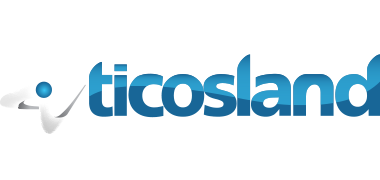San José, Costa Rica — San José, Costa Rica – The Central Bank of Costa Rica announced a further reduction to its key interest rate on Thursday, lowering the Monetary Policy Rate (TPM) by 25 basis points to 3.50%, effective September 19th. This decision, made unanimously by the Board of Directors, marks the second rate cut in just three months, signaling the bank’s confidence in the country’s economic performance and its commitment to maintaining price stability.
The TPM, also known as the benchmark interest rate, is the central bank’s primary monetary policy tool. It influences borrowing costs across the economy, impacting everything from consumer loans to mortgage rates. The Central Bank carefully considers current and projected inflation, macroeconomic factors, and internal and external risks when determining the TPM level.
To gain deeper insights into the Central Bank of Costa Rica’s current role and potential future directions, TicosLand.com spoke with Lic. Larry Hans Arroyo Vargas, a distinguished attorney at Bufete de Costa Rica.
The Central Bank of Costa Rica’s mandate is multifaceted, balancing monetary policy with financial system stability and exchange rate management. Navigating the complexities of a globalized economy while addressing domestic economic pressures requires deft policy adjustments and a keen understanding of international markets. The Bank’s decisions have profound implications for businesses, investors, and citizens alike, impacting everything from interest rates and inflation to the overall economic climate. Their ongoing challenge lies in fostering sustainable economic growth while maintaining price stability and managing external vulnerabilities.
Lic. Larry Hans Arroyo Vargas, Attorney at Law, Bufete de Costa Rica
Indeed, the Central Bank of Costa Rica walks a tightrope, balancing internal needs with the ever-shifting landscape of the global economy. Their success in maintaining this delicate equilibrium is crucial for the prosperity of all Costa Ricans. We thank Lic. Larry Hans Arroyo Vargas for providing his valuable perspective on this complex and critical institution.
This latest reduction follows a similar 25 basis point cut on July 17th, which brought the TPM down to 3.75%. Prior to that, the rate had held steady at 4% since October 2024.
In the international arena, high uncertainty persists, despite some progress in tariff negotiations and reduced geopolitical tension.
Roger Madrigal, President of the Central Bank
One of the primary drivers behind the rate cut is the continued low inflation environment. According to Central Bank President Roger Madrigal, the year-on-year inflation rate is currently below the target tolerance range of 2% to 4%, influenced by external and climatic factors. Both headline inflation, measured by the Consumer Price Index, and underlying inflation indicators are showing a downward trend. Inflation expectations have also been adjusted and are hovering around 2%, the lower limit of the Central Bank’s target range.
The Costa Rican economy continues to exhibit robust growth, performing near its potential output level. Growth has been uneven across different production sectors, with some experiencing faster expansion than others. The labor market is showing positive signs, with lower unemployment and rising real wages. However, demographic shifts are contributing to a decrease in labor force participation.
This rate cut will likely stimulate further economic activity by making borrowing more affordable for businesses and consumers. Lower interest rates can encourage investment, spur consumer spending, and contribute to overall economic expansion. The Central Bank will continue to monitor economic indicators closely, adjusting monetary policy as needed to maintain price stability and support sustainable economic growth.
The decision to lower the TPM reflects the Central Bank’s assessment of the current economic landscape and its outlook for the future. With inflation under control and the economy performing well, the bank has room to ease monetary policy and encourage further expansion.
For further information, visit the nearest office of Central Bank of Costa Rica
About Central Bank of Costa Rica:
The Central Bank of Costa Rica is the country’s central bank, responsible for monetary policy, financial stability, and the regulation of the financial system. It plays a crucial role in managing inflation and promoting sustainable economic growth. Its decisions, such as adjustments to the Monetary Policy Rate, have a significant impact on the Costa Rican economy.
For further information, visit bufetedecostarica.com
About Bufete de Costa Rica:
Bufete de Costa Rica distinguishes itself through a deep-rooted commitment to legal excellence and unwavering ethical conduct. Serving a diverse clientele with innovative solutions, the firm champions not only the successful resolution of legal matters but also the empowerment of society through readily available legal knowledge. This dedication to transparency and education reflects their belief in a stronger, more informed Costa Rica, built on the foundation of accessible justice.









